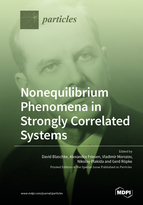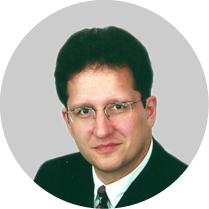Nonequilibrium Phenomena in Strongly Correlated Systems
A special issue of Particles (ISSN 2571-712X).
Deadline for manuscript submissions: closed (28 February 2019) | Viewed by 43507
Special Issue Editors
2. Center for Advanced Systems Understanding (CASUS), D-02826 Görlitz, Germany
3. Helmholtz-Zentrum Dresden-Rossendorf (HZDR), D-1328 Dresden, Germany
Interests: quantum field theory; quantum statistics; quark gluon plasma; heavy ion collisions; compact stars
Special Issues, Collections and Topics in MDPI journals
Special Issues, Collections and Topics in MDPI journals
Special Issue Information
Nonequilibrium physics is of fundamental relevance for many phenomena, occurring at the highest energy densities, such as heavy ion collisions, and also for condensed matter physics and ultracold gases. Simple approaches, such as the Boltzmann equation, become questionable when strong correlations are formed in a system. The problems to be solved in different areas are connected with concepts to formulate a nonequilibrium theory. Time evolution, as described by kinetic equations, transport codes, or reaction networks, should also include the formation of correlations, and in particular bound states.
The aim of this Special Issue is to highlight the Zubarev method of the nonequilibrium statistical operator as a unifying concept to approach nonequilibrium phenomena in different fields of physics.
We are inviting contributions of general character, as well as from the different fields of applications, ranging from high-energy physics, where highly excited matter, possibly a quark–gluon plasma, is formed in heavy ion collisions to condensed matter physics. The contributions shall cover different topics of the many-body theory of strongly correlated systems, in particular, nonequilibrium phenomena in solids, liquids, and plasmas.
This Special Issue is dedicated to the memory of D. N. Zubarev (1917–1992), whose contributions to physics concerned, in particular, the method of green functions to treat strongly correlated systems and the method of the nonequilibrium statistical operator to describe nonequilibrium phenomena.
Prof. David Blaschke
Prof. Vladimir Morozov
Prof. Nikolay Plakida
Prof. Gerd Röpke
Dr. Alexandra V. Friesen
Guest Editors
Manuscript Submission Information
Manuscripts should be submitted online at www.mdpi.com by registering and logging in to this website. Once you are registered, click here to go to the submission form. Manuscripts can be submitted until the deadline. All submissions that pass pre-check are peer-reviewed. Accepted papers will be published continuously in the journal (as soon as accepted) and will be listed together on the special issue website. Research articles, review articles as well as short communications are invited. For planned papers, a title and short abstract (about 100 words) can be sent to the Editorial Office for announcement on this website.
Submitted manuscripts should not have been published previously, nor be under consideration for publication elsewhere (except conference proceedings papers). All manuscripts are thoroughly refereed through a single-blind peer-review process. A guide for authors and other relevant information for submission of manuscripts is available on the Instructions for Authors page. Particles is an international peer-reviewed open access quarterly journal published by MDPI.
Please visit the Instructions for Authors page before submitting a manuscript. The Article Processing Charge (APC) for publication in this open access journal is 1600 CHF (Swiss Francs). Submitted papers should be well formatted and use good English. Authors may use MDPI's English editing service prior to publication or during author revisions.







